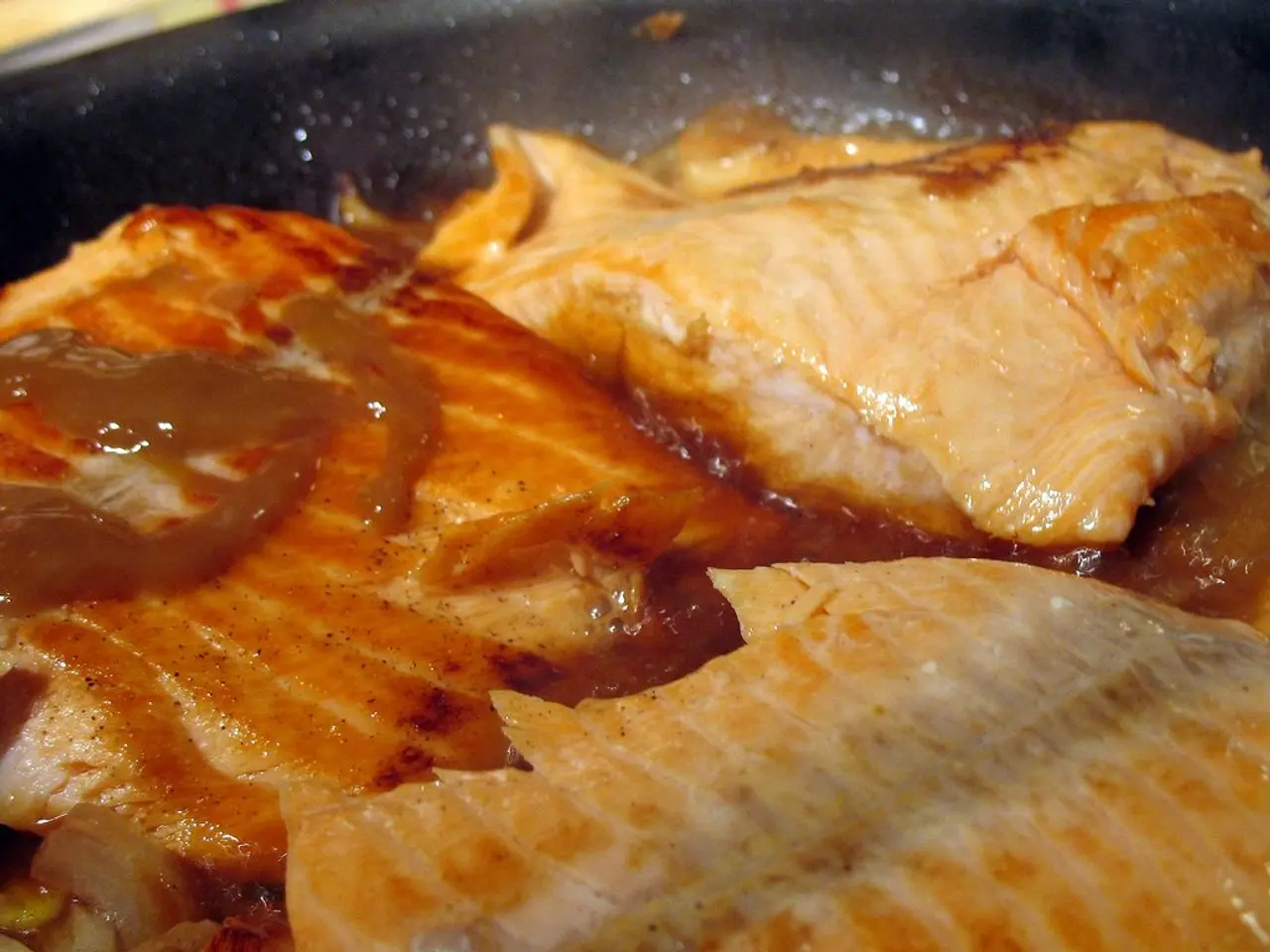Stay Cool and Healthy during Summer Helmets
Strategies for the Elderly: Enjoying Salt Pastries, Hydration Spray, and Daily Liquid Intake
Summer is here, and with temps soaring, it's essential to protect yourself, particularly if you're elderly or care-dependent. Older folks often have a tougher time dealing with heat, and the hotter it gets, the more susceptible they are to overheating and dehydration [1]. Here's our easy-to-follow guide to keeping cool and safe this summer.
1. Hydration Station
Staying ahead of dehydration is crucial. If you don't always feel thirsty, drink water regularly anyway. Aim for 2-3 liters a day, but consult your doc if you've got heart or kidney issues. Diluted fruit juices or unsweetened fruit or herbal teas can add variety to your H2O intake. But skip carbonated drinks and alcohol. They’ll dehydrate you [2][4].
Don’t forget about your pee. A light-yellow hue means you're doing well; dark urine signals you need to drink more. And if you're going less than usual, it's a red flag!
2. Light Bites & Salt Attack
Go for lighter meals with water-rich fruits and veggies like melons, cucumbers, berries, and peaches to hydrate and help you feel less sweltering. Don’t shy away from salty snacks either – they’ll stimulate your thirst and support your salt balance [3].
3. Chillaxify
Want to cool down? No need to wait for cold fronts. Try these tips:
- Moisten washcloths with cool water and place them on arms or legs
- Take a cool bath or shower
- Spray cool water on your skin using a water bottle
- Fan yourself or use a fan with a cooling setting [4]
And remember – try to stay in air-conditioned environments during peak heat hours (10 a.m. to 4 p.m.) [1].
4. Dress for Summer Success
Craft a cool wardrobe for those hot days. Opt for light, breathable, and airy fabrics like cotton or linen. When it comes to color, choose light hues – they reflect sunlight and absorb less heat [2][5].
Heat can be dangerous for folks needing care who wear incontinence products coated with a film. Switch to net pants with inserts to prevent overheating [6]. For bedridden individuals, select breathable bedding options [6].
5. Early Warning System
Keep an eye on signs that suggest your body's under too much heat. Rapid pulse, headache, dizziness, weakness, nausea, rapid breathing, and confusion could be warning signs that you're overheating or dehydrated [3][4].
If you notice any of these symptoms, move to a cool area, rest, and drink plenty of fluids. If you're unsure or the person loses consciousness, dial 112 for emergency help [3].
So, there you have it – simple strategies to help you and your loved ones enjoy these hot summer days without sacrificing comfort or health!
[1] German Environment Agency[2] Bernd Böttiger, Federal Physician of the German Red Cross (DRK)[3] German Society for Vascular Surgery and Vascular Medicine (DGG)[4] dpa/tmn[5] CDC/NIH[6] DRK Federal Physician Boettiger
In the realm of health-and-wellness, maintaining good nutrition is vital in weathering summer's heat. Consuming water-rich foods like melons, cucumbers, and berries can contribute to hydration, while salt-rich snacks can help maintain your salt balance [2].
On the other hand, delving into the realm of science, it is vital to understand that different scientific fields might offer valuable insights into health-and-wellness issues during summer. For instance, nutrition science can shed light on best practices to stay hydrated, while other scientific areas can focus on studying temperature regulation mechanisms in the human body [1].





